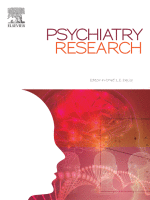Mental distress before and during the COVID-19 pandemic: A longitudinal study among communities affected by Ebola virus disease in the DR Congo
Background
Associated with high mortality rate, fear, and anxiety, Ebola Virus Disease (EVD) is a significant risk factor for mental distress. This longitudinal study aims to investigate the prevalence and predictors associated with mental distress among populations affected by EVD outbreaks in the Province of Equateur in DR Congo.
Methods
Surveys were administered in zones affected by the 2018 EVD outbreak in Equateur Province with a 16-month interval. Measures assessed sociodemographic characteristics, mental distress (GHQ-12), COVID-19 and EVD exposure and related stigmatization, and Resilience. Models of logistic regression and path analysis were used to estimate factors related to mental distress outcomes.
Results
Prevalence of mental distress decreased from Wave 1 to Wave 2 (Mental distress T1= 57.04%, Mental distress T2= 40.29%, x2= 23.981, p<.001). Clinical mental distress score at follow-up was predicted by greater levels of exposure to Ebola at baseline (B= .412, p<.001) and at Wave 2 (B= .453, p<.001) as well as Ebola stigmatization at baseline (B= .752, p<.001), and Protestant religion (B= .474, p=.038). Clinical mental distress score at follow-up was significantly associated with higher levels of exposure to COVID-19 (B= .389, p=.002) and COVID-19 related stigmatization (B= .480, p<.001). COVID-19 related stigmatization partially mediated the association between exposure to EVD (Time 1) and mental distress (B= .409, p<.001).
Conclusions
Although a decrease in mental distress symptoms was observed, its prevalence remains high. The results show that mental health programs need to develop better health and education communication strategies to reduce stigmatization.

